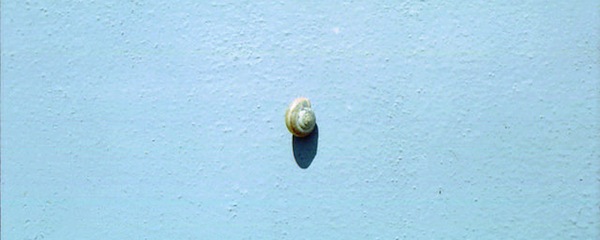
photo © Vladar4, 2014
by Sophia Kier-Byfield
In her latest photo series, Norwegian photographer Anja Niemi presents one hundred and forty Polaroid images. Over the course of a year, Niemi worked with a 1970s Polaroid camera to produce over five hundred prints. She then reduced her mass of work to create eight short photo narratives: eight short stories, to be precise.
Niemi is a fascinating artist: she always works alone, setting up, acting out and capturing her scenes and fictional characters herself. However, it was the title of this particular series, and the marriage of the photographic medium with the form of the short story, that struck me as highly significant. Niemi’s artistic decision begs a specific question: what can we learn about the short story form by thinking about it in terms of photography?
A starting point for untangling aspects of this complex, interdisciplinary relationship is the approach that Niemi took for her project: the creation of each story began with an object. In an interview with Amateur Photographer earlier this year, Niemi said:
I always have an eye open for costumes and props at vintage stores, auctions, flea markets and antique stores […] I get most excited about the items that share something about its previous owner, like make-up jars with fingerprints or well used rhinestone-embellished eyelashes. They are like instant character triggers!
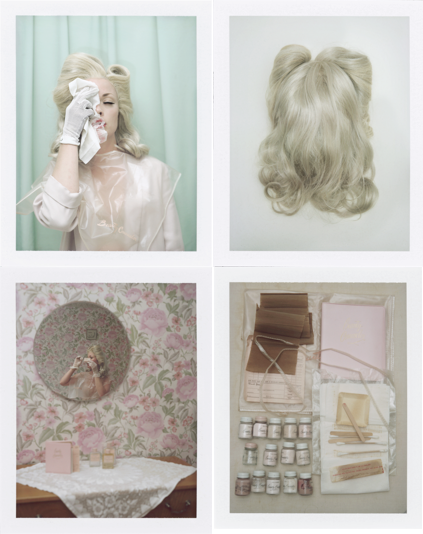 For instance, one of Niemi’s characters, Darlene the Beauty Counsellor, was born when the artist began photographing the contents of an old case of beauty samples from the 1950s. The object-state of these found things enabled the creative process of the artist to begin. The beauty case gives a glimpse into a life once lived, of faces powdered and refined, but the preliminary object can only tell so much; the artist does the rest, drawing inspiration from those dusky pinks and clinically clean whites to construct the character’s identity and narrative.
For instance, one of Niemi’s characters, Darlene the Beauty Counsellor, was born when the artist began photographing the contents of an old case of beauty samples from the 1950s. The object-state of these found things enabled the creative process of the artist to begin. The beauty case gives a glimpse into a life once lived, of faces powdered and refined, but the preliminary object can only tell so much; the artist does the rest, drawing inspiration from those dusky pinks and clinically clean whites to construct the character’s identity and narrative.
Upon encountering these photographs, and considering the notion of a story beginning with an object otherwise forgotten, I immediately thought of Virginia Woolf. In many of her writings, Woolf is preoccupied with the lives of the stuff that surround us. In a letter to composer and suffragette Ethel Smyth, Woolf expounds her desire to be allowed to ‘find’ her friend in her ‘things’:
Please if ever I come again, don’t meet me […] but let me find you among your things – you can’t think what a shock of emotion it gives me – seeing people among their things – I’ve lots such scenes in my head; the whole of life presented…
For Woolf, there is meaning to be discovered in the solid forms of objects, something endearing to be heard in their silence. Indeed, in the story ‘Solid Objects’, mundane matter, junk strewn on the side of the street, becomes an invigorating spark of subjective inspiration. During a trip to the beach with his friend Charles, John ‘[begins to burrow] his fingers down, down, into the sand’; with his hand submerged, ‘still working his fingers in the water’ that has greeted his digits, he suddenly touches ‘something hard – a full drop of solid matter […] a large irregular lump’.
There is nothing particularly special about this lump of glass: is it described as ‘so thick as to be almost opaque; the smoothing of the sea had completely worn off any edge or shape’. However, it is this very ambiguity that allows John to tap into his own creative response. The description of the glass in its found state swiftly progresses into a series of fictitious speculations. Stories of its origin flow forth, an unstoppable stream of captivating possibilities:
You had only to enclose it in a rim of gold, or pierce it with a wire, and it became a jewel; part of a necklace, or a dull, green light upon a finger. Perhaps after all it was really a gem; something worn by a dark Princess trailing her finger in the water as she sat in the stern of the boat and listened to the slaves singing as they rowed her across the Bay. Or the oak sides of a sunk Elizabethan treasure-chest had split apart, and, rolled over and over, over and over, its emeralds had come at last to shore.
John soon becomes so fixated with finding such objects that he loses his grip on his career endeavours in the ‘real world’. His pursuit may very well be a form of play, considered by some, such as his friend Charles, to be unworthy of such commitment and isolation, but he has in fact gained access to something invaluable. He now has access to his ability to imagine and to create: he can see beyond the surface, occupy another plane of experience.
Similarly, for the narrator in Woolf’s ‘The Mark on the Wall’, the intangible blossoms out of the tangible, the psychological interior out of the material exterior:
How readily our thoughts swarm upon a new object, lifting it a little way, as ants carry a blade of straw so feverishly, and then leave it […] If that mark was made by a nail, it can’t have been for a picture, it must have been for a miniature – the miniature of a lady with white powdered curls, powder-dusted cheeks, and lips like red carnations.
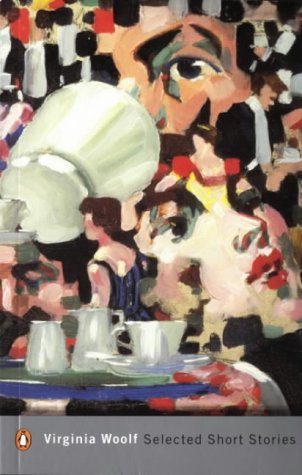 The mere implication of this mark, this domestic trace, establishes a supple space within which the narrator can muse and speculate. Rather than sitting obsolete, objects are simultaneously ‘something definite, something real’ and ‘proof of some existence other than ours’; we will never be able to fully understand them, but this is productive rather than destructive. For instance, in ‘The Mark on the Wall’, the sudden discovery that ‘the mark on the wall’ is ‘a snail’ punctures the fictional bubble, swiftly pulling down the blinds on the narrative. On the other hand, in ‘Solid Objects’, the question as to how the ‘china so vivid and alert’ and ‘the glass so mute and contemplative […] came to exist in the same world’ and ‘stand upon the same narrow strip of marble in the same room’ remains ‘unanswered’; John can continue on his quest.
The mere implication of this mark, this domestic trace, establishes a supple space within which the narrator can muse and speculate. Rather than sitting obsolete, objects are simultaneously ‘something definite, something real’ and ‘proof of some existence other than ours’; we will never be able to fully understand them, but this is productive rather than destructive. For instance, in ‘The Mark on the Wall’, the sudden discovery that ‘the mark on the wall’ is ‘a snail’ punctures the fictional bubble, swiftly pulling down the blinds on the narrative. On the other hand, in ‘Solid Objects’, the question as to how the ‘china so vivid and alert’ and ‘the glass so mute and contemplative […] came to exist in the same world’ and ‘stand upon the same narrow strip of marble in the same room’ remains ‘unanswered’; John can continue on his quest.
But what about that connection between the short story form and the photographic medium? That Niemi worked with peel-apart Polaroids reminds us of the fact that the photograph is an object – it can be made and found, held and touched, collected and exchanged. The state of digital images is not as straight-forward, but whether film or digital, what is comprehended in the viewing of a photograph is only limited. Aspects of anatomy or circumstance can be gauged, but the essence of the person or scene is entirely dependent on the viewer’s response. So much is left unsaid, so much more to tell that can’t be told. Similarly, short stories offer us something restricted, abruptly ended, or open to interpretation. When it comes to these forms, so much more lies beneath or beyond what we see and read.
Thus, in both the short story and the photograph, we must partake in what Edgar Allan Poe, in his early theorisation of the short story, called the ‘kindred art’: viewers and readers must engage with the content they are encountering, forming an integral part of the creative process. The objects that initiated Niemi’s narratives – such as an unreturned bank deposit bag – are loaded with meaning; then her images, in all their stasis, call on us to put the pieces together and complete the puzzle. In the words of Roland Barthes, ‘whatever it grants to vision and whatever its manner, a photograph is always invisible: it is not it that we see’.
Therefore, photographs, despite all their hush, are dazzlingly, infinitely suggestive. Similarly, the short story is a lustrous, lambent object, burning in our minds long after the reading experience itself has drawn to a close. Like John’s pieces of glass and china, the best short stories are often like found objects, glowing, radiant fragments that we sometimes come across by chance. These fleeting encounters, however, can completely alter how we perceive the world around us.
When we keep in mind that Woolf herself was fascinated by photography, her words on hybridity, recorded in Walter Sickert: A Conversation, sound particularly applicable:
Among the many kinds of artists, it may be that there are some who are hybrid. Some, that is to say, bore deeper and deeper into the stuff of their own art; others are always making raids into the lands of others.
The short story, in all its flexibility, is an example of how cultural exchange, both through artistic practice and critical analysis, breeds new forms. Indeed, it is intriguing to note that Niemi has only allowed a select number of the images from her series to be published online: ‘once the show’s down it’s over. My intention from the start was for them to live on in book form instead.’ That her photographic narratives will be brought together and bound, just like a collection of short stories, exemplifies that this interdisciplinary dialogue is far from ceasing.
~
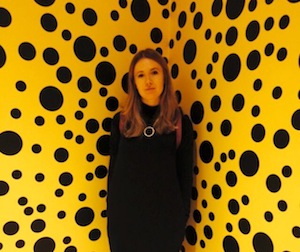 Sophia Kier-Byfield gained her BA in English Literature from Royal Holloway, University of London, in 2013. After a year of working as a private tutor and travelling the world, she moved to Brighton to pursue a Masters in Modern and Contemporary Literature, Culture and Thought at the university of Sussex, completed with Distinction and department prize in 2015. Soon after, she decided to move to Aarhus to be close to her Danish family and explore this part of her identity. Sophia is currently working as an English Literature teacher at Aarhus University, cycling everywhere and trying to write more. She blogs at sophiakierbyfield.wordpress.com
Sophia Kier-Byfield gained her BA in English Literature from Royal Holloway, University of London, in 2013. After a year of working as a private tutor and travelling the world, she moved to Brighton to pursue a Masters in Modern and Contemporary Literature, Culture and Thought at the university of Sussex, completed with Distinction and department prize in 2015. Soon after, she decided to move to Aarhus to be close to her Danish family and explore this part of her identity. Sophia is currently working as an English Literature teacher at Aarhus University, cycling everywhere and trying to write more. She blogs at sophiakierbyfield.wordpress.com
~
photographs © Anja Niemi
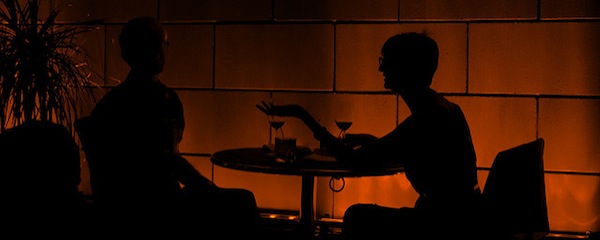
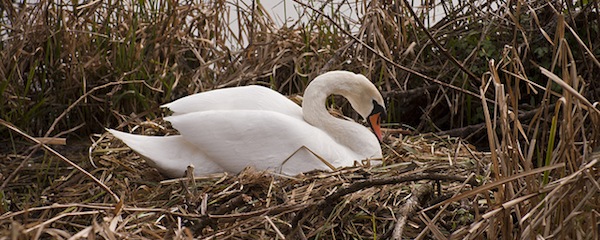
One thought on “The Stories of Objects”
Comments are closed.